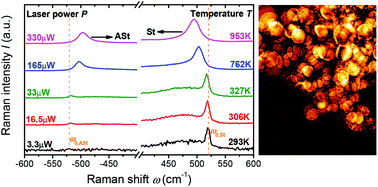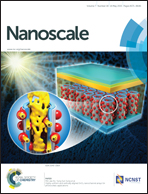Raman study of laser-induced heating effects in free-standing silicon nanocrystals
Abstract
This paper demonstrates that free-standing silicon nanocrystals (Si NCs) have significantly different thermal conductivity properties compared to Si NCs embedded in a host matrix. The temperatures of Si NCs under laser illumination have been determined by measuring the ratio of the Anti-Stokes to Stokes intensities of the first order Si–Si transverse optical (TO) phonon mode. It is found that large free-standing Si NCs are easily heated up to ∼953 K by the laser light. The laser heating effects are reversible to a large extent, however the nature of the free-standing Si NCs is slightly modified after intensive illumination. The free-standing Si NCs can even be easily melted when exposed to a well-focused laser beam. Under these conditions, the blackbody radiation of the heated Si NCs starts to compete with the detected Raman signals. A simplified model of the heating effects is proposed to study the size dependence of the heated free-standing Si NCs with increasing laser power. It is concluded that the huge red-shift of the Si–Si TO mode observed under intensive laser illumination originates from laser-induced heating effects. In contrast, under similar illumination conditions Si NCs embedded in matrixes are hardly heated due to better thermal conductivity.


 Please wait while we load your content...
Please wait while we load your content...